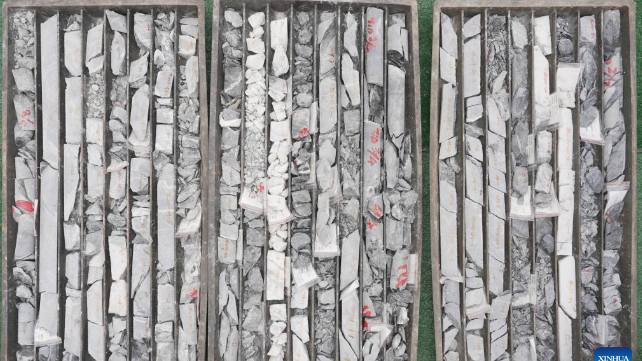Two large gold deposits discovered in China may hold a collective mass of over 2,000 metric tons (2,200 US tons) of the precious material – the largest ever found within the country's borders.
If confirmed by further geological surveys, the Wangu deposit in Hunan province and the Dadonggou deposit in Liaoning province could be worth billions, with the Wangu deposit alone estimated at over 600 billion yuan (US$83 billion).
These estimates come with significant caveats – something about not counting the golden eggs before the goose has laid them – not least that the Wangu valuation assumes the entire resource can be extracted and that current gold prices will hold, conditions rarely achieved in real-world mining.
Related: It Literally Takes Fire And Brimstone to Transport Gold to Earth's Surface
Watch the video below for a summary:

The Wangu deposit was reported by Xinhua, China's official state news agency, in late 2024 as a 'supergiant' find with the potential to dramatically expand China's gold resources.
"Many drilled rock cores showed visible gold," said bureau prospector Chen Rulin at the time of the discovery.

The report stated that the deposit contained 300 tons of gold reserves – that is, gold that has been assessed and quantified – down to a depth of 2,000 meters (1.2 miles), with an estimate of more than 1,000 tons down to 3,000 meters.
To date, no scientific paper or report has been published on the Wangu deposit, but it's possible that the exploration report is still being prepared.
The Dadonggou deposit may be even more impressive.
According to China's State Council Information Office, subsequent government briefings have suggested a potential resource approaching 1,500 tons – higher than the more than 1,000 tons estimated in a report published in China Mining Magazine earlier this year.
The discovery was made by the Liaoning Fifth Geological Brigade, which surveyed the region, finding that traces of gold there dismissed as economically unviable in the 1980s actually belong to one large, continuous mineral belt, some 3,000 meters long and 1,500 meters wide.
Every borehole the prospectors drilled contained gold, the paper states. It's relatively low grade at 0.3 to 1 part per million – so the amount of gold per ton of material is pretty low – but the researchers say that it's easily extractable, with a potential gold recovery rate of 65 to 91 percent.
The interesting part here may be the type of deposit represented by Dadonggou.
It appears adjacent to the Tan-Lu Fault, a major tectonic boundary fault zone with large horizontal shear fractures, along which minerals such as gold and pyrite were deposited over time.
The characteristics differ from everything else in that region, suggesting that we may have overlooked similar gold deposits simply because the geology didn't look as expected for a significant gold deposit.
So, while it's true that there appears to be a great deal of gold in the Dadonggou deposit, its greater value may lie in serving as a signpost for identifying others like it – if the grade holds up and extraction proves as fruitful as the initial investigation predicts.
Gold, for all its wonderful uses, isn't hugely abundant in Earth's upper layers. For each ton of crust material, there's an estimated just 0.004 grams of the precious metal. Yet somehow, there are regions that contain "bonanza" abundances.
In 2021, researchers in Canada proposed that rich gold deposits may be more common than we thought, and may have occurred in several other contexts than previous estimates had allowed for.
Humans have prized gold for thousands of years, using it in unique tools, art, jewelry, and burials. Yet the precious heavy metal still surprises us with new discoveries.
Related: Scientists Witness Lead Literally Turn Into Gold in The Large Hadron Collider
In 2024, researchers in Sweden created goldene, a single-atom-thick, two-dimensional kind of gold, with properties not seen in its regular form.
Also last year, Australian scientists proposed that earthquakes could help forge large gold nuggets deep underground, while in England, a metal detectorist discovered what may be the country's largest-ever nugget.

Researchers continue to develop potential medical uses for nanoparticles of this valuable, finite resource, too: from fighting antimicrobial resistance to preserving vision and treating Parkinson's symptoms.
One study even suggests gold nanoparticles could improve the flavor of our wine.
Just how many bonanzas of the valuable ore remain yet to be discovered around the world is unclear. Evidence is starting to suggest we may have reached peak gold in 2018.

Until more data emerge, the recently reported scales remain provisional, with more detailed reports no doubt in the works.
Other large deposits, such as Kerr-Sulphurets-Mitchell in Canada, with an estimated 4,790 tons, and Pebble in the US, with an estimated 3,310 tons of gold, may still leave them in the dust.
We'll just have to wait and see.
The research on the Dadonggou deposit is published in China Mining Magazine.

